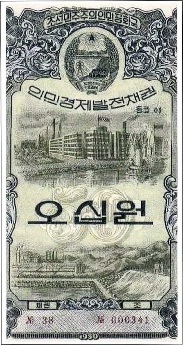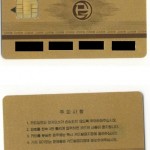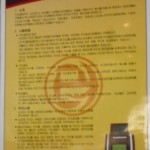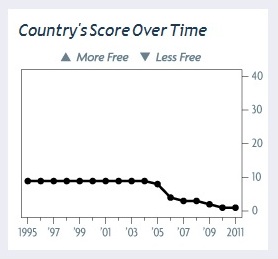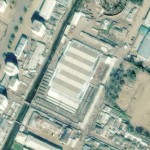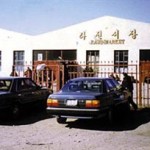Institute for Far Eastern Studies (IFES)
2011-12-8
It has been two years since the implementation of North Korea’s currency revaluation and the South Korean government recently has presented an assessment of it, evaluating it as a complete failure, as exchange rates have skyrocketed and inflation set in.
It has been largely evaluated as having weakened the government control over the market and the people.
In the report released by South Korea’s Ministry of Unification (MOU), the prices of rice and exchange rates have returned previously to the level before the measure went into effect. The prices of rice per kg that cost between 20 to 40 KPW in December 2009 has jumped to 3,000 to 5,000 KPW as of November of this year, which is more than a 2,300 times increase.
The price of rice that went for 2,400 KPW early this October is believed to be close to 5,000 KWP currently.
The fluctuation of rice price is allegedly associated with preparation for next year’s celebration (i.e., of North Korea becoming a “strong and prosperous nation”). According to an anonymous North Korean government official, rice is being stockpiled to be released next year during the celebration period.
North Korea has self-proclaimed 2012, the centennial birthday of Kim Il Sung, as the first year of the “strong and prosperous nation.” While it may be ephemeral, it said it will normalize rice distribution for next year.
The exchange rate for KPW in December 2009 was 35 North Korean won to one USD; a year later, it soared to 2,000 won, and it is currently worth 3,800 won.
At the time of the currency revaluation, the usage of foreign currency was completely banned. This in return made the exchange rate spiral up. In February of this year, North Korea eventually abandoned this measure.
One Chinese yuan is also worth about 400 KPW, standing shoulder to shoulder with the value of the US dollar. About 300 markets that exist currently in North Korea are affected by the soaring exchange rate of the yuan, raising the prices of Chinese products on the market.
North Korea also has increased wages for the workers a hundred fold during the currency redenomination; but life for the people has become harder due to hyperinflation.
The average monthly salary of a North Korean worker is about 3,000 KPW; however, the monthly expenses for an average family of four hovers around 100,000 KPW.
The MOU has announced that the currency reform implemented by the North Korean government two years ago was intended to weaken the role of the markets, and regulate the new-rich, generate supplies of capital for the construction industry, and adjust the amount of domestic currency in circulation. In the end, the reevaluation ended up achieving the opposite.
At the time, the government prohibited sales of imported and industrial products on the market and promoted marketization of agricultural goods. But the people’s dependency on markets is as high as ever, leading to a relaxation of market regulation in February 2010.
The MOU also stated, “There is growing distrust of the government among North Koreans from the failed policy which in effect undermined the power of the government to control the market and the people.”
The Daily NK also reported some similar information:
The price of rice in North Hamkyung Province and other areas along the Sino-North Korean border has passed 5,000 won per kilo. This represents a rise of over 1,000 won in little over a fortnight, after similar reports came out two weeks ago asserting that the price had passed 4,000 won in late November.
Sources have independently reported that the 5,000 won mark has been passed in markets in the cities of Hoeryeong and Musan, both in North Hamkyung Province, and Hyesan in Yangkang Province. The exchange rate of the Chinese Yuan against the North Korean won has simultaneously jumped from the low 700s to 800 in Hyesan and over 1,000 in Musan and Hoeryeong.
Reporting the news, one Hoeryeong-based source told The Daily NK, “The price rises have left people living hand-to-mouth, and the endless government controls and crackdowns mean people have no idea what to do. The atmosphere in the jangmadang has gotten really ugly on rumors that prices are going to rise further.”
A source from Musan pointed out, “The Yuan seems to go up every day, and now that rice has passed 5,000 won a kilo people have no idea what they’re going to eat to survive.”
“We’ve already given up on the idea of eating rice cake for the Chinese New Year,” the trading source from Hyesan said, going on, “Chosun rice now costs 5,000 won a kilo while Chinese rice is 3,800 won. Wherever you go people are up in arms about it.”
Most locals blame the rapid rise in the cost of living on the strength of the Yuan against the North Korean won. In this way, the lack of confidence in the local currency promoted and enhanced by the 2009 currency redenomination seems to be having a direct effect on the price of rice.
“Everybody prefers to use Renminbi to Chosun money, so by the time you wake up in the morning the thing which has risen again is the price of the Yuan. Because the exchange rate is rising, it is inevitable that the price of rice goes up as well,” the source from Hyesan explained.”
Interestingly, according to the border region sources there is no great difference in the physical volume of rice in the market. However, because the Yuan has become the main currency for both the supply and demand sides of the market, prices have risen in accordance with the change in the exchange rate. The use of the Yuan as the medium of exchange between locals was already becoming institutionalized even before the recent rises.
The rapid price rises are also encouraging traders to try and obtain more locally-grown rice.
The source from Hyesan said, “Train stations in North Hamgyung and Hwanghae Provinces are in complete chaos when there is a train because of all the traders trying to bring in local rice, as well as the agents regulating them,” while the source from Musan said, “Many people are stocking up on food while they can because of reports that food prices will keep rising until next spring.”
Marcus Noland also blogged about the price of food and US$ exchange rate in the DPRK last week.
Read the full Daily NK story here:
Rice Tops Key 5,000 Won Mark
Daily NK
Lee Seok Young
2011-12-13

